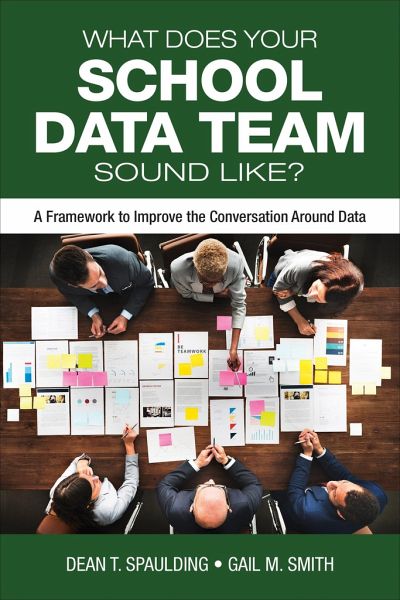
What Does Your School Data Team Sound Like?
A Framework to Improve the Conversation Around Data
Versandkostenfrei!
Versandfertig in 2-4 Wochen

PAYBACK Punkte
23 °P sammeln!




What Does Your Data Team Sound Like? provides an approach that gets teams talking about and applying data effectively in a variety of setting and scenarios.
Dr. Dean T. Spaulding is currently an assistant professor at the College of Saint Rose in Albany, New York, where he teaches educational research and program evaluation. Dr. Spaulding is the former chair of the Teaching Evaluation SIG for the American Evaluation Association. He also has been a professional evaluator/researcher for fifteen years and has in-depth experience serving as an evaluator on multiple state and federally funded projects. More specifically, he has conducted evaluation for programs focusing on K-12 settings, the use of technology in the classroom, as well as working in the area of teaching and learning with at-risk youth populations. At the government/state agency level, Dr. Spaulding has conducted research and provided programmatic feedback for New York State Department of Education, New York Sate Department of Public Health, and the New York State Office of Mental Health (OMH). Dr. Spaulding also is one of the authors of Methods in Educational Research: From Theory to Practice, 2006, Jossey-Bass Wiley, San Francisco, and the author of Program Evaluation in Practice: Core Concepts and Examples for discussion and Analysis (2008), Jossey-Bass Wiley, and Action Research for School Leaders (2012). Dr. Spaulding is also a consultant at Z Score Inc. dspaulding@zscore.net
Produktdetails
- Verlag: SAGE Publications Inc
- Seitenzahl: 176
- Erscheinungstermin: 22. Oktober 2018
- Englisch
- Abmessung: 153mm x 227mm x 19mm
- Gewicht: 290g
- ISBN-13: 9781506390925
- ISBN-10: 1506390927
- Artikelnr.: 50988874
Herstellerkennzeichnung
Libri GmbH
Europaallee 1
36244 Bad Hersfeld
gpsr@libri.de
Für dieses Produkt wurde noch keine Bewertung abgegeben. Wir würden uns sehr freuen, wenn du die erste Bewertung schreibst!
Eine Bewertung schreiben
Eine Bewertung schreiben
Andere Kunden interessierten sich für











